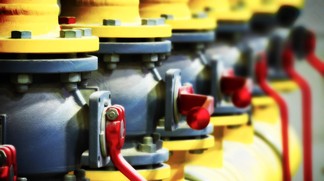Researchers from the University of California at Berkeley and EPFL have conducted a collaborative study using computer simulations in order to determine the best material to store methane obtained from natural gas.
 Image Credit. ThinkStock
Image Credit. ThinkStock
The results showed that the materials can only meet up to 70% of the energy targets set by a US Department of Energy organization, ARPA-e.Natural gas is a popular choice for automotive fuel but its low energy density requires it be liquefied or compressed, thus making it difficult to integrate into vehicles.
The best solution is to store natural gas within materials containing nano-sized pores, with governmental targets usually being the driving force behind the search for these materials.
In this new study, scientists have developed more than 650,000 designs suitable for nonporous materials. The targets set by ARPA-e show the importance of finding a suitable material which can inexpensively store methane in cars. ARPA-e requires a nonporous material that stores methane with an energy density comparable to that of compressed natural gas, which operates at low pressure and can be used in car fuel tanks.
This new research has been published in the Energy & Environmental Science journal and suggested the existence of materials which are capable of storing a maximum of 220 units of methane, which accounts for 70% of the ARPA-e target. The team constructed computational structure models of 650,000 different materials and used molecular simulations in order to model natural gas storage.
The building blocks of materials were used to systematically generate novel materials. Using advanced molecular simulation techniques produced to run processors in heavy graphics-based computers games, the performance of these was analysed.
“We always hope that someone will discover a novel chemistry method that can reach this target, but 70% is already a major step forward and may very well be also interesting from a commercial point of view.”
Berend Smit, Director of EPFL’s Energy Center
The results showed that it is extremely difficult to achieve the ARPA-e target for storing natural gas in nonporous materials. In addition, the study explained even the best nonporous materials can only achieve 70% energy density of compressed natural gas.
“Of course, an interesting question that this work raises is whether one can derive such a radical conclusion based on computer simulations alone,” said Berend Smit.
This proves that the best nonporous materials for storing methane have already been discovered. “We feel that future experimental efforts to improve this target will be a waste of time since the ARPA-e target is impossible to reach. Even if we find a material that is a few percent better, it will be nowhere close to the original target,” said Smit.